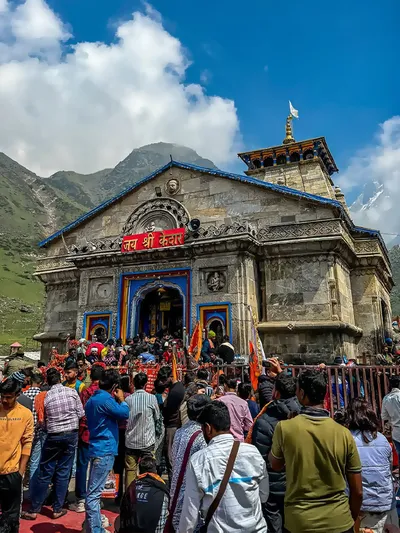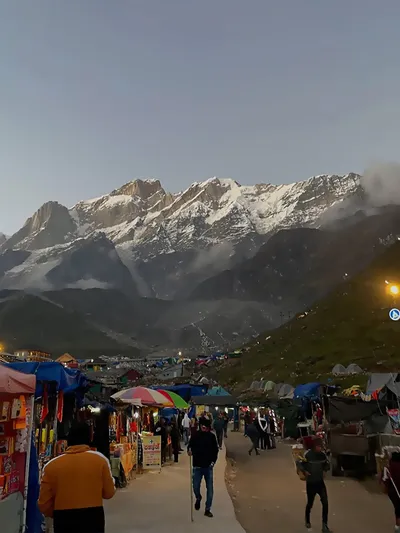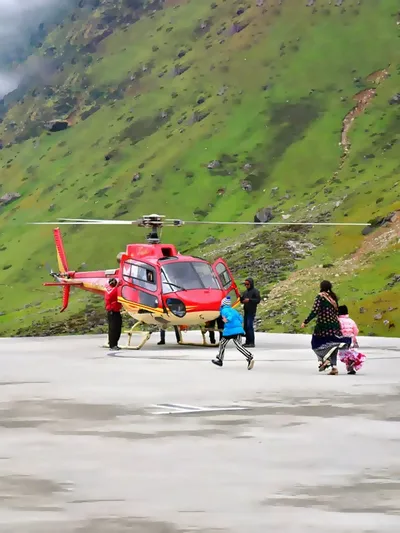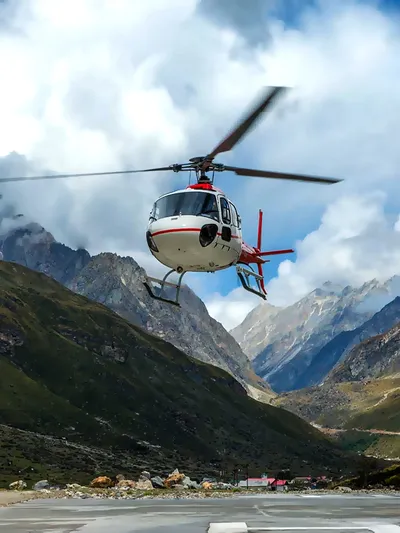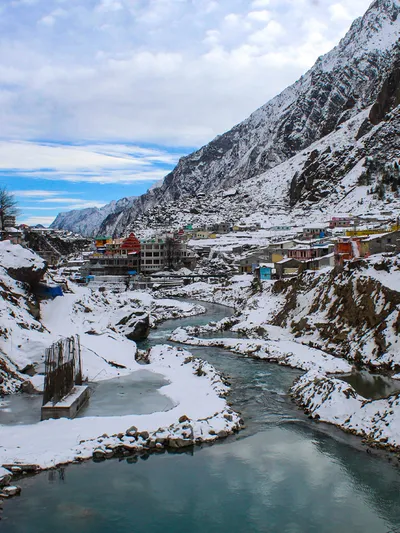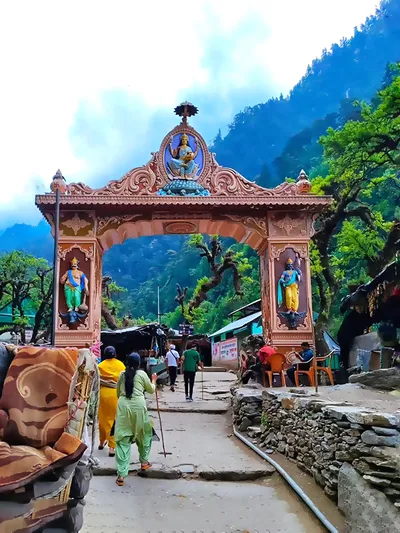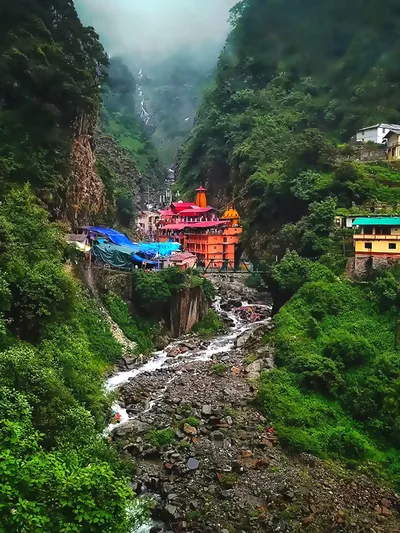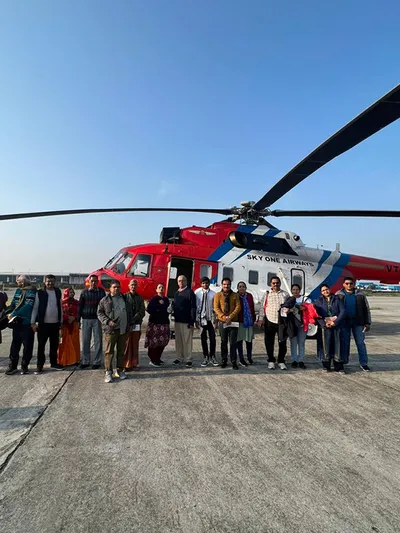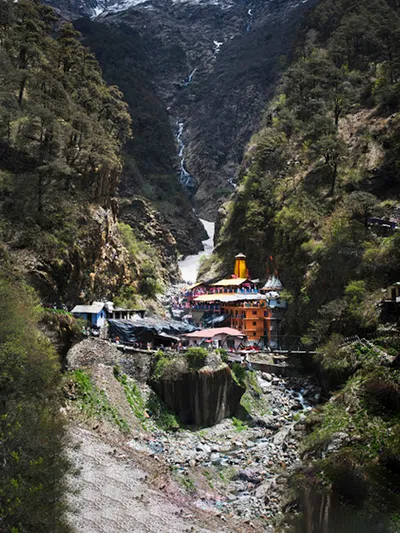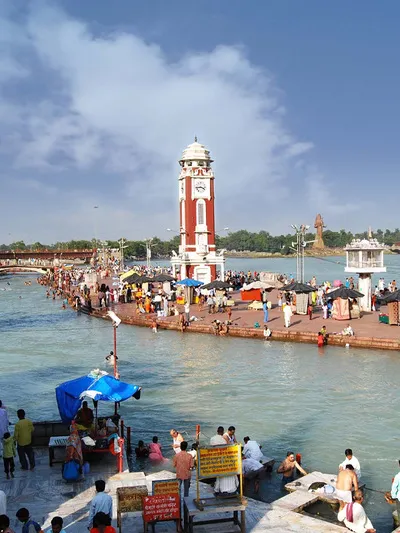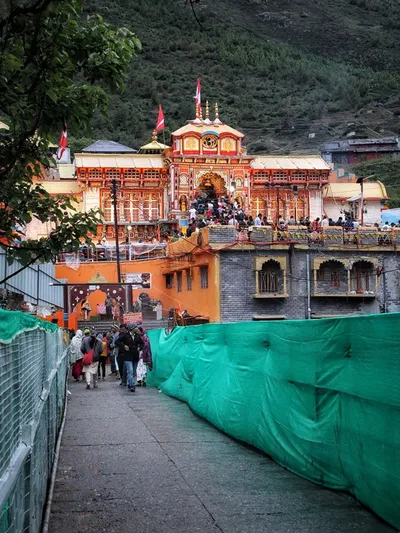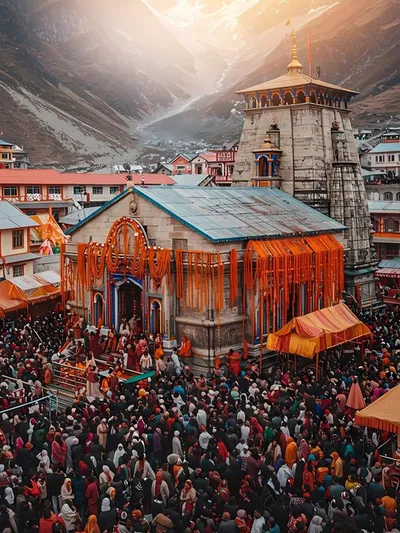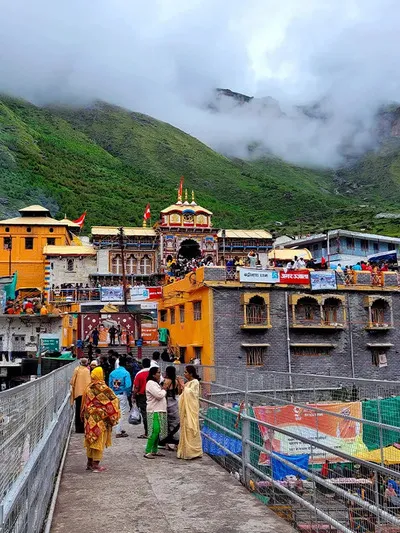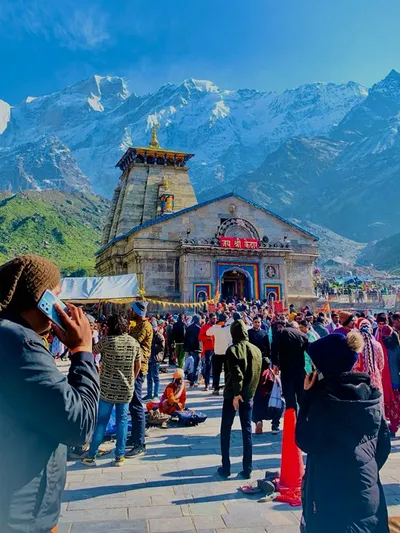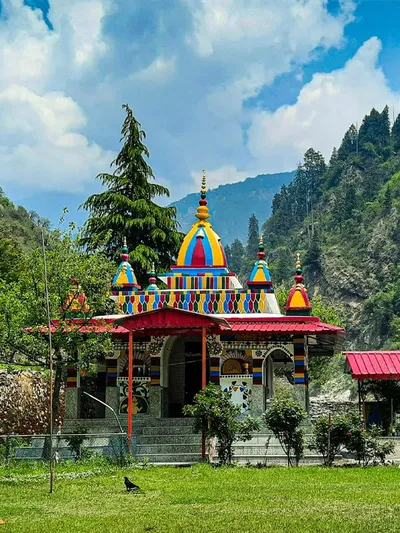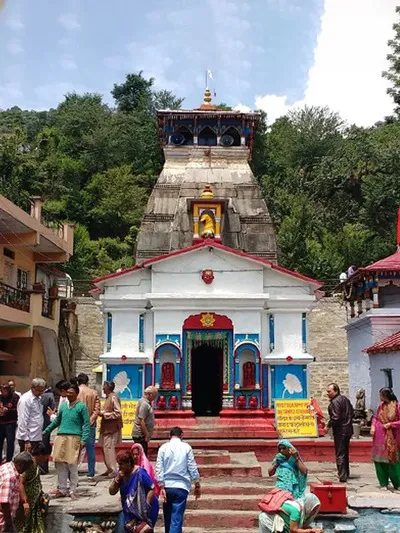Popular Devi Temples in Uttarakhand

Devi temples in Uttarakhand are not just for sightseeing, but people feel a deep connection with the Goddess there. Visitors come from near and far, even from other countries, to get the Goddess’s blessings. The power of the Goddess is so strong and inspires many people. That’s why Uttarakhand, known as Devbhoomi, has many holy temples, including the famous Shakti Peethas.
Legend Behind Shakti Peeths
- Goddess Sati felt very sad and hurt when her father, Daksha insulted her at a special ceremony called Yagna. Because of this, she decided to sacrifice herself by burning.
- After hearing of Sati’s death. Lord Shiva was so angry that he punished Daksha but later forgave him and gave him life again. Shiva carried Sati’s body and did Tandava (a strong dance filled with pain and anger).
- To end the destruction Lord Vishnu cut Sati’s body into parts. Wherever her body pieces fell, those places became holy and filled with her energy. These places are called Shakti Peethas and temples were built there to remember her sacrifice.
Here is a list of famous Devi temples to help you know where to go.
01. Naina Devi Temple, Nainital
Naina Devi Temple in Nainital is a famous Shakti Peeth and a very special place where many people come to worship with deep faith. Goddess Naini Devi is the main goddess of this temple, which is located near Nainital Lake. In this holy temple, there is no full statue of the Goddess. Instead, only her two eyes are worshipped.
It is believed that Goddess Sati’s eyes fell here when Lord Shiva was carrying her burnt body. You’ll find many shops near the Naina Devi Temple where you can buy Prasad and Pooja items.
Timings: 6 am to 10 pm
02. Mansa Devi Temple, Haridwar
People believe that Mansa Devi was born from Lord Shiva’s thoughts. Every day hundreds of pilgrims visit this holy temple, which is known as a Siddha Peeth, a place where wishes come true. It is said that if you truly pray with a pure heart, Mansa Devi fulfills your wishes. That’s why many devotees tie a sacred thread around a small temple inside the complex as part of a special ritual.
Mansa Devi Temple is located on top of Bilwa Hill in Haridwar. It is one of the five important pilgrimage spots (Panch Teerths) that devotees visit in Haridwar. Earlier, people had to climb the hill to reach the temple, which was tiring. But now, with the ropeway (called Udan Khatola), visitors can easily reach the temple and enjoy a beautiful view of Haridwar from above.
In the temple, there are two idols people pray to: one of the Goddess with eight arms, and another with three heads and five arms.
Timings: 5 am to 9 pm
03. Chandi Devi Mandir, Haridwar
The temples of Mansa Devi and Chandi Devi are very close to each other. They are seen as two different forms of the same Goddess in Hindu stories. Chandi Devi Temple is located near Mansa Devi Temple, on Neel Parvat in Haridwar. It is also one of the five important pilgrimage places (Panch Teerths) in the city. It is believed that Adi Shankaracharya placed the idol of the God here in the 8th century AD. But the temple’s present structure was built in 1929 by King Suchat Singh from Kashmir.
According to mythology, the demons Shumbh and Nishumbh captured Lord Indra’s kingdom. Shumbh wanted to marry Goddess Parvati because of her beauty, but when she refused, he sent his men, Chand and Mund, to attack her. To defeat the demons, the Goddess took the form of Chandika. The battle took place on Neel Parvat, and that’s why the Chandi Devi Temple was built there.
Timings: 6 am to 8 pm
04. Maya Devi Temple, Haridwar
Haridwar was once known as Mayapuri, named after Goddess Maya, who is worshipped here. Inside the temple, there are idols of Goddess Maya, Goddess Kali, and Goddess Kamakhya. Many devotees visit Maya Devi Temple during Navratri and the Kumbh Fair to get blessings.
It is believed that Goddess Sati’s heart and navel fell here. The Devi is worshipped with three heads and four arms. Built in the 11th century, this is one of the oldest temples in the city.
Timings: 6:30 am to 12 noon, 3 pm to 9 pm
05. Yamunotri Temple, Uttarakhand
The well-known Char Dham Yatra begins with a visit to Yamunotri temple, dedicated to the Yamuna River. The temple is built very close to the Yamuna River. Some visitors like to trek further to see where the river starts.
The trek to Yamunotri temple can be a little tough. You have to walk 6 km uphill from Jankichatti. However, the fatigue goes away when you see the amazing, clear water of the Yamuna River and the beautiful mountain views.
Timings: 6:00 am to 8:00 pm
06. Gangotri Temple, Uttarakhand
The second to be finished in the Char Dham Yatra shrines, Gangotri Temple is built to celebrate the sanctity of the River near the region of her actual physical origins at Gaumukh glacier. It is Bhagirathi, the river’s principal tributary, that originates at Gangotri. As per myths, King Bhagirath engaged in rigorous penances to free his ancestors from the clutches of a certain curse that had befell them that rendering their ascent to salvation impossible. As an answer to his prayers, the heavenly river Ganga agreed to descend upon earth, the purity of her waters an antidote for one’s karmic sins.
The Gangotri shrine is a mere 4 km drive from Uttarkashi. It falls second in the shrines to be visited as per the Char Dham Yatra.
Timings: 4:00 AM to 2:00 PM and 3:00 PM To 9:00 PM
07. Dhari Devi Temple, Rudraprayag
Did you know that Dhari Devi is considered to be the guardian deity of the entire state of Uttarakhand? Also, she is invoked as the supreme protector of the Char Dham pilgrimage trail. The temple here celebrates the fierce form of Shakti’s upper half as Dhari Devi, while her lower half is venerated as Kali at Kalimath. An interesting feature is that the temple’s deity undergoes transformation from a young girl to an old woman in a single day, reflecting, perhaps, the impermanent nature of material reality.
This venerated Shakti Peeth is located on the beautiful banks of the River Alaknanda. The mighty flow of the river reflects the fiery Goddess Shakti, too. Since it falls en route to Badrinath, on the Rudraprayag- Srinagar road, pilgrims of Char Dham offer their humblest obeisance before the Mother before they continue further.
08. Kalimath, Rudraprayag
The lower half of the Devi worshipped as Dhari Devi is said to be contained in the sacred shrine at Kalimath. Kali is worshipped as her Sri Yantra and not as an idol in the temple. This is one of the rare, and probably the only, shrine that worships Goddess Lakshmi and Goddess Saraswati together with Maa Kali. The village of Kalimath falls between Guptakashi and Ukhimath. The village is said to have been the birthplace of the famous Sanskrit poet Kalidas.
Kalimath temple is both a siddha Peeth and a Shakti Peeth. This is a must-visit site for any pilgrim wishing to commune with Shakti.
Timings: 6 am to 12 pm, 2 to 7 pm
09. Surkanda Devi Temple, Dhanaulti
One cannot afford to miss breathing in the sacred air of Surkanda Devi Temple if one is visiting Dhanaulti hill station. The temple can be reached only after walking for about 3 km from Kadukkai, the nearby village. The temple marks the place at which Goddess Sati’s head fell. The site reverberates with intense spiritual magnetism. Combine this with the aesthetic wonder the hills and the dense forests prepare in this sacred site, and one finds the perfect indulgence for one’s senses and spiritual heart at Surkanda Temple. The stunning views of neighboring Himalayan valleys and peaks from the hilltop are such a delight.
Timings: 7 a.m. to 5 p.m
10. Chandrabadani Devi Temple, Tehri Garhwal
The temple of Chandrabadani Devi is situated upon the majestic mountain Chandrabadani. Temple’s legend cites the shrine to have been where Goddess Sati’s torso fell. Even the many tridents scattered all over the place is attributed to them having been her weapons. The panoramic views of the nearby mountains of Badrinath, Kedarnath, and Surkanda, the mountaintop, are so endearingly beautiful that one would hardly want to leave the heavenly site. The temple is also noted for not having an idol as the centre of worship; instead, the revered Shri Yantra is worshipped. In order to reach the temple, one needs to travel to Jamnikhal, which is a 31 km drive from Devprayag. An additional drive of 7 km plus an uphill 1 km trek, and one enters the holy premises of Chandrabadani Temple.
Timings: 6:00 am to 7:00 pm
11. Gaurikund Temple, Gaurikund
The trek to Kedarnath during the Char Dham pilgrimage starts from a place called Gaurikund. This is the sacred soil that saw the transfiguration of Uma from a human maiden infatuated with her Beloved to Goddess Parvati, awakened embodiment of Shakti Herself. In fact, the rigorous ascetic penances the Goddess undertook to engender this metamorphosis are supposed to have taken place at its sacred pond, Gaurikund, after which the entire village is named. There is a cave temple dedicated to Devi nearby. Another legend associated with the sacred shrine is that this is where Devi Parvati created Lord Ganesha out of soap bubbles from her body. Can a place get any holier than this?
Timings: 4:00 AM to 9:00 PM
12. Kasar Devi Temple, Almora
Many artistic people, writers, nature lovers spiritual seekers have been visiting Kasar Devi village near Almora for a long time. There is a Goddess temple in Kasar Devi village, which was built around the 2nd century. Many well-known people like Swami Vivekananda, Anandamayi Ma, and Timothy Leary, along with writers like D.H. Lawrence and the author of "The Tibetan Book of the Dead," have visited this place because they felt a strong spiritual energy here.
Kasar Devi Temple is located in a place where the Earth’s magnetic field is very strong. Even NASA has studied this and found that the magnetic energy here is different from other places. Many visitors who meditate here feel a strong spiritual energy. The temple has a special meditation room where people can relax and refresh their minds.
Timings: 5:00 am to 8:00 pm
13. Anusuya Devi Temple, Chamoli
The beautiful Anusuya Devi Temple and Atri Muni Ashram are located at a distance of 12 km from the town of Gopeshwar. The Temple stands engulfed in dense, verdant forests. A beautiful waterfall is located nearby, too. This temple is devoted to Anusuya Devi, the tales of whose satitva and pativratya made even the Goddesses envious. Legend goes that they sent their respective husbands to lure her away from her devotion to her husband. Anusuya Devi, on being requested by the trinity disguised as saints to be served food half-nude, converted the trio into small babies, using the supernatural powers earned of intense spiritual devotion, whom she could feed as a Mother. Well, the Goddesses had to request Anusuya Devi to help them regain their husbands as adult masculine figures to which she agreed after being given the boon by mother Dattatreya, the saint-avatar of Trimurti- Brahma, Vishnu, and Mahesh.
Timings: 5:00 am to 8:00 pm
14. Nanda Devi Temple, Munsiyari
Nature itself is her grandest temple. One recognizes this while visiting the rather austere temple built in the enchanting hill station of Munsiyari. The breathtaking beauty of the Panchachuli peaks, Gori Ganga etc., from the mountain top upon which the temple is built truly ascends one’s heart to heaven. Enjoy Her Darshan in the temple’s shrine, in every ‘thing of beauty’ she gifts for you to behold!
Timings: 6:00 am to 8:00 pm
15. Jhula Devi Temple, Ranikhet
It’s truly beautiful to see the small Jhula Devi Temple covered with thousands of bells tied by devotees. Bells are tied by those whose wishes came true after they prayed to Devi. The area around the temple was once full of wild animals, where the temple now stands. There is also an interesting story about how the temple was created. Goddess Durga came in a dream to a villager and asked him to dig her statue from a special place. After he found it, a temple was built there. At Jhula Devi Temple, it is believed that Mata Devi grants the wishes of her devotees.
Timings: 6:00 am to 7:00 pm
Conclusion
These Devi temples in Uttarakhand are special. People feel peace, faith, and good vibes here. Each temple, like Naina Devi or Jhula Devi, or Kasar Devi, has different story and importance. People from all over India and even from other countries visit these temples to pray, find peace and feel close to Goddess. These shrines are surrounded by rivers, hills and forests that makes them not only holy but also beautiful to see. That’s why Uttarakhand is known as Devbhoomi, the land where Gods live.
